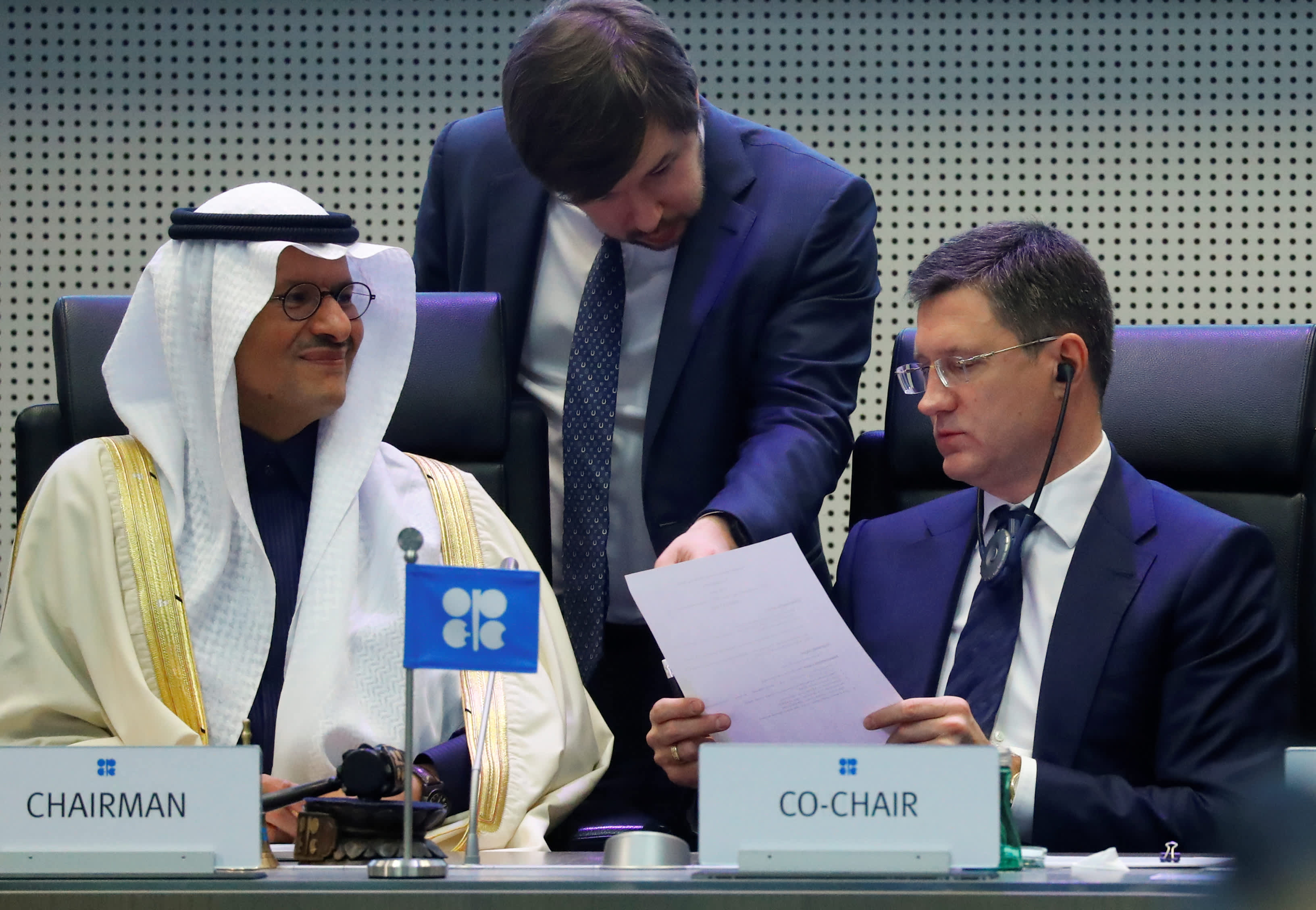OPEC+ production cuts have brought oil prices back from the brink, but the group will have to tread carefully to avoid triggering a new price collapse when it begins to reverse those reductions.
The Joint Ministerial Monitoring Committee, which reviews OPEC+ production, meets on Wednesday, and will consider whether the the group should keep 9.6 million barrels a day off the market, or roll that back by about 2 million barrels a day, as sought by Saudi Arabia.
OPEC+ has been policing its members and demanding high compliance of its latest round of cuts.
“The question is, going forward, if you start easing, which they’re going to do, can they keep it together or do they open the flood gates?” said Helima Croft, RBC head of global commodities strategy. “Can you hold discipline within the producer organization?”
Croft said the wild card is whether there’s another wave of Covid-19 cases, large enough to force more economic shutdowns or even a lockdown by another country.
“There’s a lot of optimism that the market can handle anything that is thrown at it, in terms of Covid,” said Croft. “Does [
OPEC+] have enough of an early warning system? They’re going to have to be really nimble because there’s so much uncertainty about a second wave.”
Oil prices began to fall early in the year, on the decline in China demand as it shut parts of its economy due to the spreading virus. A price war between Saudi Arabia and Russia then made the situation worse, and in March, oil took a sharp leg down, as the U.S. and Europe took steps to lock down economic activity. By April, the price even sank into negative territory as investors got trapped in expiring futures contracts, in a market with no buyers and too much oil.
West Texas Intermediate crude futures for August were at $40.52 per barrel Wednesday, trading flattish. Brent, the international benchmark was just above $43 per barrel.
The International Energy Agency said last week that the worst effects of the coronavirus on oil demand have passed, but the impact will linger. It said oil demand would be down by 5.1 million barrels a day in the second half of 2020. While that’s half of the 10.75 million drop in demand in the first half, the rise in oil prices could entice more producers to add oil to the market.
“They’re itching to put more oil on the market and cash in on this $40 a barrel price improvement they’ve gotten,” said John Kilduff, partner with Again Capital. “I think it’s a little early. I’m not sure the market can really absorb any additional barrels right now.”
Croft said the group is showing better compliance with the existing cuts, including Russia.
She said Saudi Arabia Oil Minister Prince Abdulaziz bin Salman, like his predecessor, likes to think of OPEC as a central bank, and he admires former Federal Reserve Chairman Alan Greenspan.
The idea is that the producer group has its finger on the liquidity spigot, in this case oil, and uses diplomacy to achieve results.
Citigroup’s Ed Morse said the comparison of OPEC to a central bank is flawed, though it is favored by both Russia and Saudi Arabia.
“They are not a central bank. Their interests are not those of a regulator prioritizing public good, but maximizing revenue for their members,” said Morse, head of global commodities at Citi. “Also, unlike central banks that control currency and bond market spigots, OPEC+ must also compete with US shale, Brazilian deepwater, and Canadian oil sands, as emerging sources of liquidity that play by different rules.”
Kilduff said there are signs U.S. energy producers are looking to resume some production. “We did see some commercial hedging when the futures for the 2021 calendar strip went over $40,” he said, meaning that oil companies locked in hedges for oil at that price level.
U.S. oil output was at a record 13.1 million barrels a day in March, and fell to as low as 10.5 million barrels a day in June, according to weekly EIA data. U.S. gasoline demand was at 8.8 million barrels a week, according to the most recent data. That is about 1 million barrels below normal demand for this time of year, but much better than the dip close to 5 million barrels a day in March.
Gasoline demand will be closely watched to see if it is impacted by the outbreak of cases across the southern U.S.
“I was in the camp prices would head higher. OPEC+ would keep a clamp on the supply,” said Kilduff. “But this is a quick draw reaction of putting more oil on the market. If they increase production at $40, what will they do when they get to $50? I think it’s a sign of desperation.”
“The common thread running through OPEC+ is cash crunch. They’re going to break down and put more on the market,” said Kilduff. “If this Covid-19 gets bad again, we’re going to head back down … I think you’d see a dip below $35, with $30 being the floor.”
Morse, in the note, said there is some froth in current prices and there are several supply issues that could be potentially bearish.That would including an increase of 500,000 in Libyan production. He said there’s the chance that some 20% to 30% of curtained North American production can come back online. China has also been buying as much as 3 million barrels a day above refining needs, and it could cut back on that.
Morse said, however, it could work out for OPEC+.
“Adding oil to the market at a time when there are remaining ambiguities over full compliance by Iraq, Kazakhstan, Angola and Nigeria, could be a worthwhile gamble,” Morse wrote. “Oil exported in August won’t reach some markets until late September. By then it might be needed if demand continues to grow and inventories shrink enough.”
